You might be someone looking to landscape your backyard with ornamental shade trees. Elm trees offer the most dramatic canopy throughout the year since they can tolerate the extreme growing conditions.
There are over 35 species of elms where eight types hailing from North America. Other types of elm trees are native to China, India, Central Asia, and Eastern Siberia. The tree barks, leaves, and seeds are features that help tell the difference between elm varieties.
Knowing the different types of elm trees and their characteristics will help choose the best species ideal for landscape design. Below is a breakdown of the most common elm tree types with their growing requirements.
What Is An Elm Tree?
An elm tree is a tall deciduous or semi-deciduous tree that belongs to the genus Ulmus and the family Ulmaceae. The genus Ulmus has over 35 different species ranging from forest trees to ornamental trees.
These trees are native to North America (North Temperate Regions) since they can tolerate extreme growing conditions. Many landscape enthusiasts prefer cultivating these trees due to their height and attractive foliages.
The Elm-wood is suitable for constructing boats, furniture, and farm buildings since they are durable underwater. But the Dutch elm disease has reduced the population of these trees in North America and other European countries. (Source: University of Minnesota).
Some elm varieties are more resistant to the Dutch elm disease than other elm tree types. We recommend you read this article to pick the best American elm tree for your backyard. We also hope the pictures of elm trees will help you make an informed decision.
What Do Elm Tree Look Like?
There are about 35 elm species in the United States, Canada, Asia, and Europe. Each species vary in appearance, size, shape, and leaf type (Source: American Forestry Association). Below is a breakdown of the most common characteristics of elm trees:
Elm Tree Leaves
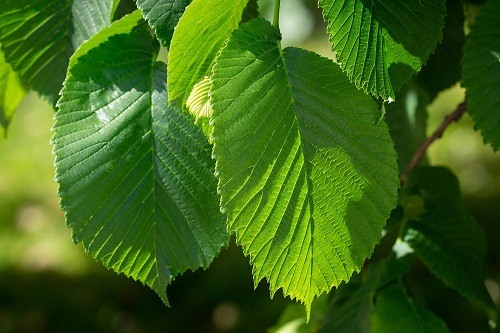
Elm trees have oval-shaped leaves with serrated edges and pointed tips. The staggered leaves are arranged alternately to create a dense canopy for providing the best shade.
Most elm varieties have light-green to dark-green foliages that turn golden or dull yellow in the fall. The leaf size ranges from 10-12 cm long and 7cm wide.
The visible green veins and jagged leaf blades will make your backyard stand out from the neighborhood. But the leaf veins’ visibility will vary depending on the elm tree species.
Elm Tree Seeds
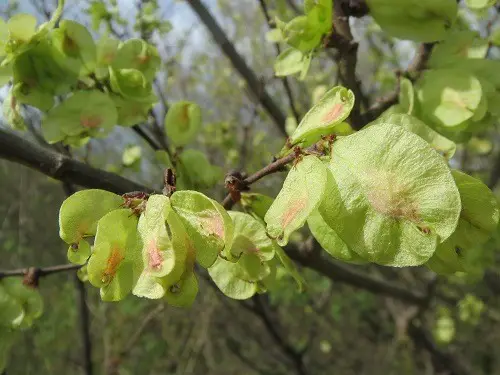
Elm tree seeds are encased in a samara (seed pods) and produced at the end of the bloom phase. The samaras are oval-shaped and light green with light textured outer surfaces.
Each samara carries solitary seeds at the center and appears in large quantities during spring. These seeds disperse during the late spring and summer when the pods dry out.
Elm Tree Bark
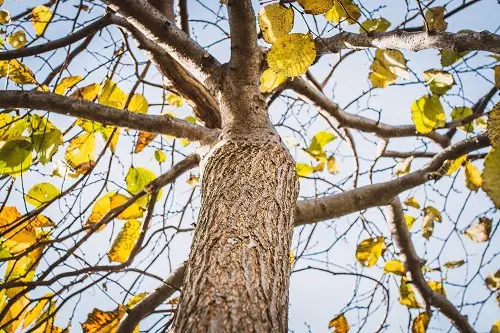
Elm tree bark is dark grayish-brown with deep furrows and a scaly appearance. These deep fissures run vertically and intersect with each other resulting in a lace-like texture.
Some elm types have more colorful barks that are smooth throughout. It helps make it easier to distinguish different types of elm trees.
How to Identify Elm Trees?
Elm trees are identifiable by their dark grayish-brown bark with deep furrows, pointed oval leaves with serrated margins, and large sprawling canopy. (Source: University of Nebraska).
Elm trees also produce flowers during spring that mature into round samaras and seeds. Besides that, the elm leaves turn golden or dull yellow during the fall season.
The alternating leaf growth on each branch is a prominent feature for identifying elm trees. The leaf growth pattern is ideal for creating a dense shade.
Different Types of Elm Trees with Pictures
Slippery Elm (Ulmus rubra)
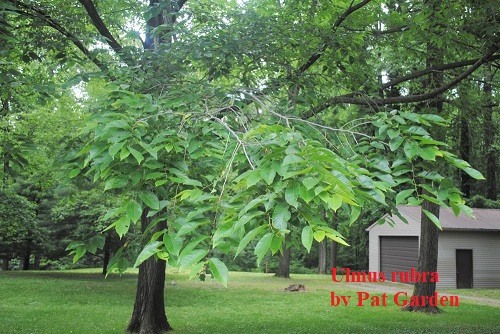
It is a medium-sized deciduous tree with a vase-shaped to broad and round crown. The elm tree species has red inner-bark and reddish-green flowers. These elm species are native to the central and Southern United States.
The slippery elm tree also derives its name from the sticky red secretion from the inner bark. The elm species are vulnerable to Dutch elm disease and phloem necrosis, making them unsuitable for landscaping.
| Tree Bark Appearance | Reddish-gray with long shallow furrows and scales. |
| Leaves Shape and Texture | Long obovate leaves with a rough upper side and smooth underside. |
| Leaf Color | Red to dark green and later dull yellow during the fall. |
| Maximum Height | 30-60 feet |
| USDA Growing Zones | 3-9 |
Siberian Elm (Ulmus pumila)
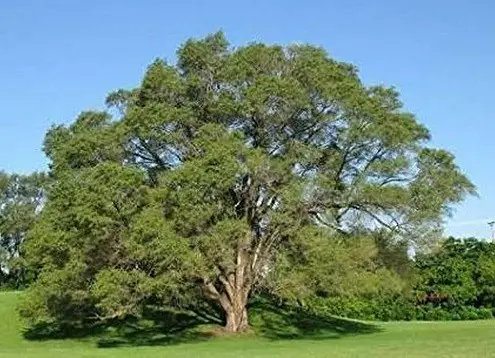
It is a fast-growing small to a medium-sized deciduous tree. The elm species grows up to 3 feet per year with a canopy that spreads to 40 feet wide. Siberian elm trees thrive under full sun and fertile and well-draining soil.
The elm tree can grow anywhere in North America due to its tenacity. It is the perfect choice for places where tree species do not thrive. Siberian elm trees are resistant to the Dutch elm disease but not invincible.
| Tree Bark Appearance | Gray with fissures running vertically up the trunk. |
| Tree Leaves Appearance | Shiny dark green with serrated margins. |
| Maximum Height | 50-70 feet. |
| USDA Growing Zones | 4-9 |
| Native Areas | Siberia, Korea, Tibet, India, Mongolia, and Northern China |
European White Elm (Ulmus laevis)
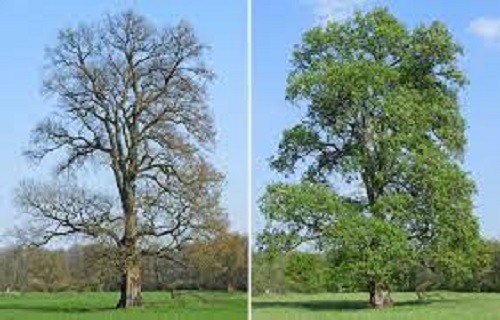
The elm species is also known as the Russian elm tree in the United State. It is a fast-growing elm tree with a broad open oval crown that becomes round at maturity. The elm type thrives in swampy areas since the root systems can tolerate wetness and flooding.
These deciduous trees usually lose leaves during the cold weather (Fall Season). The loose branches make this elm species not ideal for landscaping near buildings. We recommend planting them in the floodplains and along river banks.
| Tree Bark Appearance | Whitish-gray and smooth with slight fissures and scales that have reddish-brown tints. |
| Tree Leaves Appearance | Ovate-shaped leaves with serrated margins. |
| Maximum Height | 100 feet or more |
| USDA Growing Zones | 5-9 |
| Native Areas | Central and Southeast Europe. |
English Elm (Ulmus procera)
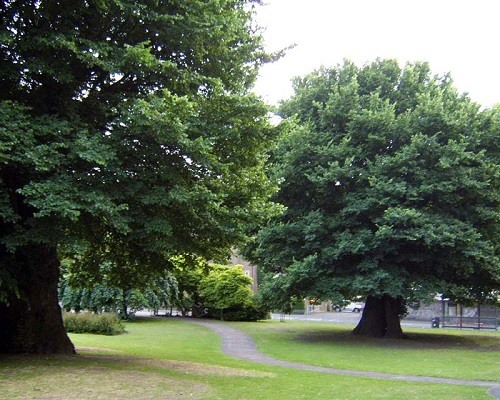
It is another fast-growing elm species that reproduce through suckers instead of seeds. English elm is the tallest elm tree with 50 feet canopy spread. The elm species are popular in England due to the ideal growing conditions.
The English elm trees are becoming extinct due to the Dutch elm disease. They are also tolerant to salty soil and urban pollution though the weak wood limits its landscaping appeal near residential buildings.
| Tree Bark Appearance | Grayish-brown with rough fissures. |
| Tree Leaves Appearance | Dark green leaves with serrated margins and asymmetrical base. |
| Maximum Height | 130 feet and more |
| USDA Growing Zone | 5-8 |
| Native Areas | Western and Southern Europe, Britain |
David Elm (Ulmus davidiana)
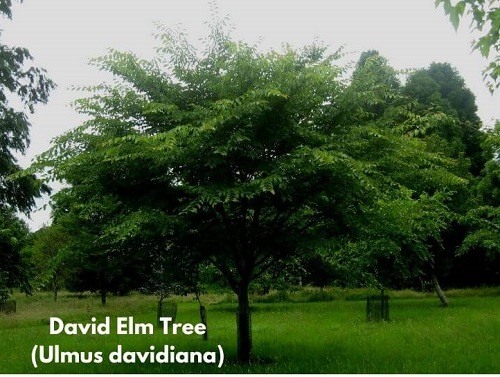
It is among the smallest deciduous elm tree with a dense canopy. Many botanists use this elm species to create cultivars resistant to the Dutch elm diseases. The elm type thrives in moist wetlands and has trouble growing outside its native area.
David elm trees are native to China, Siberia, Mongolia, and Korea. The elm tree leaves have rough surfaces and develop red pigment while growing. We recommend replicating the native region’s growing condition for the elm species to flourish.
| Tree Bark Appearance | Grayish-brown with medium fissures |
| Tree Leaves Appearance | Obovate shape with rough upper surfaces and red hints. |
| Maximum Height | 30-50 feet |
| USDA Growing Zone | 4-8 |
| Native Areas | China, Japan, Korea, Mongolia, and Siberia |
Chinese Elm (Ulmus parvifolia)
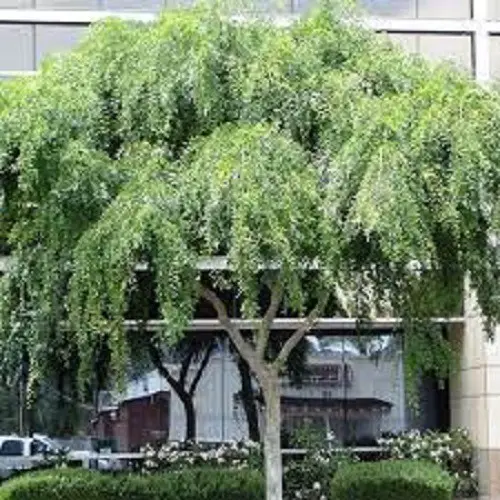
These elm trees (lacebark elms or drake elms) have rounded shapes with distinctive exfoliating bark. The come bark comes in different shades such as brown, gray, green, and orange. The elm tree species prefer moist and well-draining soil types.
The Chinese elm tree is the best alternative to the bonsai tree since it allows excessive trimming or pruning. These elm trees are less vulnerable to the Dutch disease, and it is ideal as ornamental landscape tree.
| Tree Bark Appearance | Flaking with thin orange patches |
| Tree Leaves Appearance | Small and leathery with a single-toothed margin |
| Maximum Height Growth | 33-60 feet |
| USDA Growing Zone | 5-9 |
Cherry-Bark Elm (Ulmus villosa)
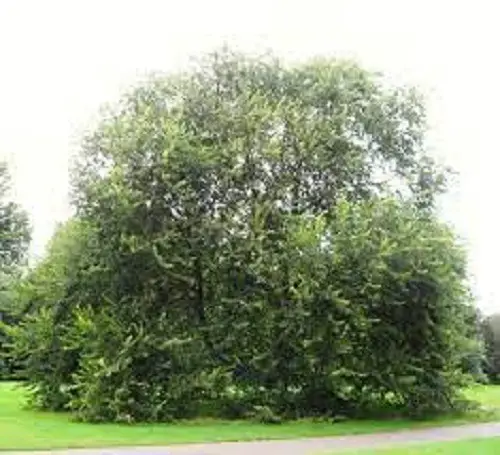
Cherry-bark or marn elms are large bushy trees that form a round shape. Some species hide their smooth bark branches on the thick trucks. The elliptic is a distinguishing feature of cherry-bark elm trees.
The elm species are also more resistant to the Dutch elm disease. They are an excellent choice for creating shades in the park or street. We recommend planting cherry-bark elm trees away from the residential buildings.
| Tree Bark Appearance | Smooth with bands of flaky bark wrapping the trunk. |
| Tree Leaves Appearance | Long oblong and bright green leaves with jagged-looking edges. |
| Maximum Height Growth | 82 feet. |
| USDA Growing Zone | 4-8 |
Cedar Elm (Ulmus crassifolia)
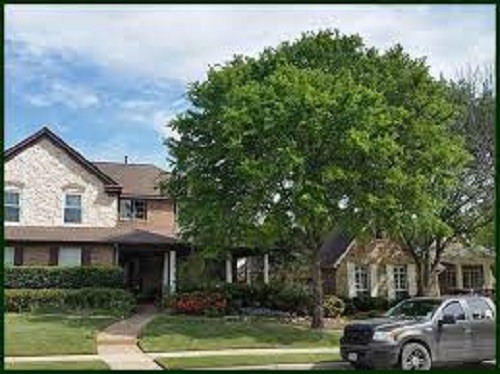
It is an elm species ideal for urban areas since it can tolerate drought, pollution, and low-quality soil. It is the only elm type with the smallest leaves and loves growing near junipers (cedar). Cedar elm trees are vulnerable to the Dutch elm disease and hail from southern North America.
| Tree Bark Appearance | Gray and scaly with medium fissure. |
| Tree Leaves Appearance | Small leaves with jagged edges |
| Maximum Height Growth | 82 feet |
| USDA Growing Zone | 6-9 |
Camperdown Elm (Ulmus glabra Camperdownii)
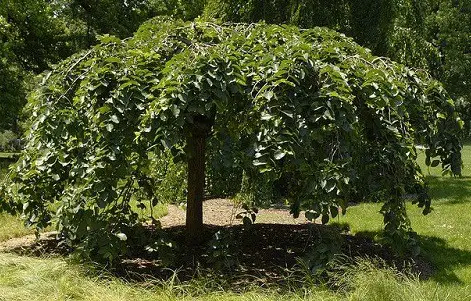
It is a weeping variety of wych elm tree species that needs propagation by grafting. Camperdown elm trees also have twisted and trailing branches that form a dense foliage appearance. The flat canopy spread wider than the height.
The elm tree species prefer moist and well-draining soil. We recommend watering the elm tree during summer and spring to prevent the soil from drying. The drooping branches are the reason behind the name weeping elm.
| Tree Bark Appearance | Grey and smooth |
| Tree Leaves Appearance | Broad and double-toothed leaves with rough surfaces. |
| Maximum Height Growth | 15-25 feet |
| USDA Growing Zone | 5-7 |
American Elm (Ulmus Americana)
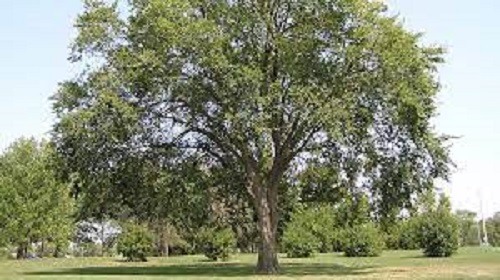
It is a large deciduous elm tree with an umbrella-like canopy. It is also called white elm or water elm with a maximum height of 80 feet. The broad-rounded crown creates an ornamental shade in the backyard. The elm species are also susceptible to the Dutch elm disease.
| Tree Bark Appearance | Grayish-brown with deep diamond-shaped fissures and broad ridges. |
| Tree Leaves Appearance | Ovate leaves with serrated margins and smooth blades. |
| Maximum Height Growth | 72 feet |
| USDA Growing Zone | 2-9 |
Florida Elm (Ulmus Americana Var Floridana)
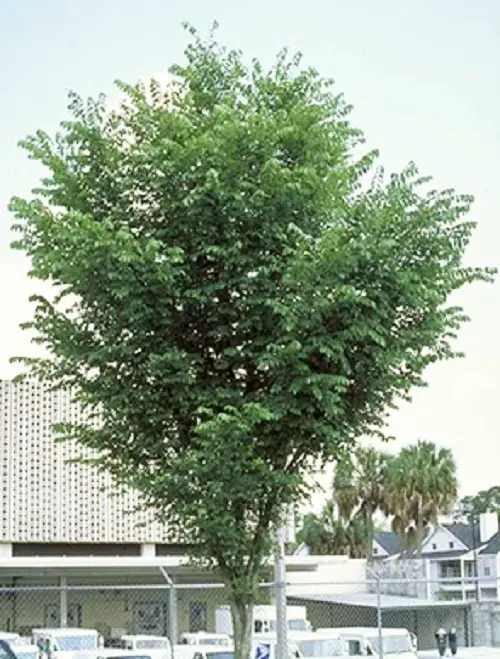
It is another fast-growth elm tree with vase-shaped growth. The elm tree has ovate foliages with serrated margins and grayish-brown bark. The bark also has diamond-shaped fissures that run vertically on the trunk.
| Tree Bark Appearance | Grayish-brown |
| Tree Leaves Appearance | Ovate leaves with serrated margins |
| Maximum Height | 72 feet |
| USDA Growing Zone | 2-8 |
Bosque Elm (Ulmus parvifolia Bosque)
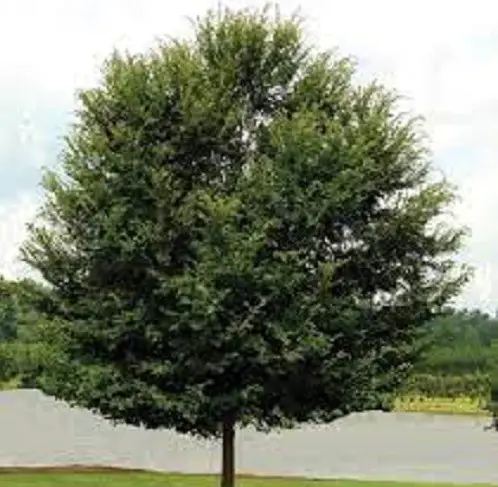
It is a cultivar of Chinese elm and produces an oval-shaped canopy with slightly droopy branches. We recommend planting bosque elms in the parks and along residential streets. The peeling bark and golden-red leaves are a common phenomenon in the fall season.
| Tree Bark Appearance | Flaking bark with thin orange patches |
| Tree Leaves Appearance | Small leaves with uneven margins |
| Maximum Height Growth | 20 feet |
| USDA Growing Zone | 2-9 |
Japanese Elm Tree (Zelkova serrata)
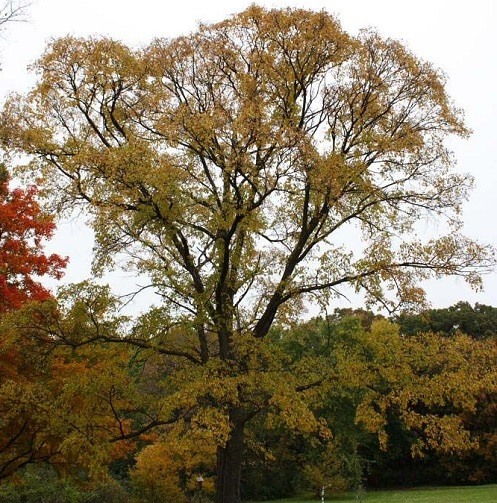
It is the largest deciduous tree with a broad canopy and round shape. The short trunks that split into numerous branches are the distinctive features of Japanese elm trees. These elm species are less vulnerable to the Dutch elm disease and provide ornamental shades.
| Tree Bark Appearance | Grayish-brown to grayish-white and flaky. |
| Tree Leaves Appearance | Oblong ovate-shape leaves with toothed margins |
| Maximum Height Growth | 55 feet |
| USDA Growing Zone | 4-8 |
Wych Elm Tree (Ulmus glabra)
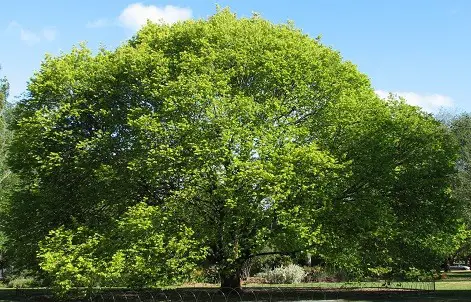
It is also called scotch elm species and hails from Europe. The elm species have an umbrella-like canopy with short fat trunks. The wych elm tree is tolerant to cold weather in the Northern European Countries.
| Tree Bark Appearance | Gray and smooth while a juvenile. Mature trunks have bark with deep fissures. |
| Tree Leaves Appearance | Long broad and ovate-shaped leaves |
| Maximum Height Growth | 130 feet |
| USDA Growing Zones | 2-8 |
Golden Wych Elm Tree (Ulmus glabra Lutescens)
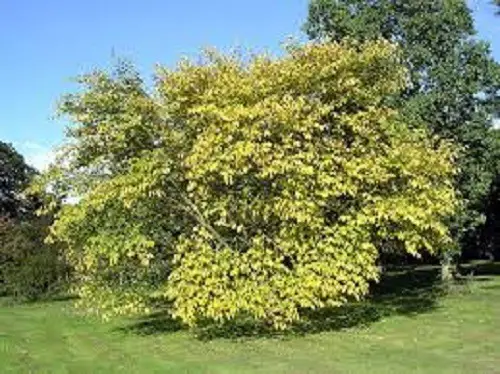
It is the smallest Ulmus glabra cultivar with an umbrella-type canopy. This medium-sized deciduous elm tree grows up to 50 feet with bright yellow leaves.
| Tree Bark Appearance | Grayish and smooth |
| Tree Leaves Appearance | Bright yellow leaves |
| Maximum Height Growth | 50 feet |
| USDA Growing Zone | 3-9 |
Field Elm Tree (Ulmus minor)
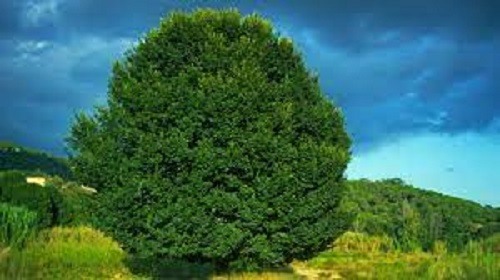
It is a tall elm species with graceful stature, small leaves, and a rough trunk. The field elm tree can grow up to 100 feet with small oval and glossy green leaves.
| Tree Bark Appearance | Grayish and rough |
| Tree Leaves Appearance | Small oval and glossy green |
| Maximum Height Growth | 100 feet |
| USDA Growing Zone | 4-8 |
English Elm Atinia (Ulmus minor Atinia)
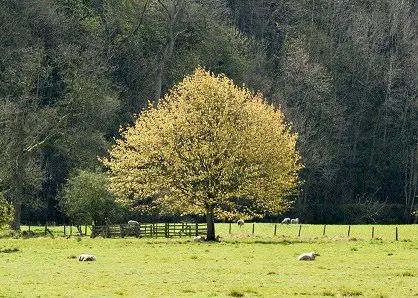
It is a fast-growing deciduous elm tree hailing from Europe. The figure-eight leaf shape is the distinctive feature of the English Elm Atina elm tree.
| Tree Bark Appearance | |
| Tree Leaves Appearance | |
| Maximum Height Growth | |
| USDA Growing Zone |
Dutch Elm (Ulmus hollandica)
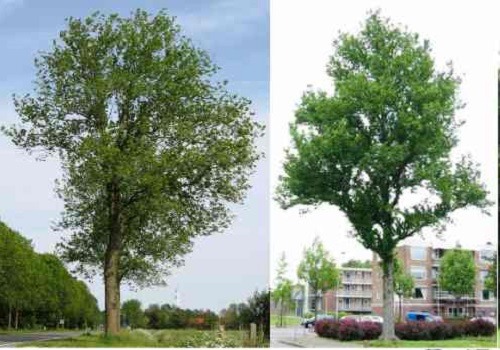
It is a hybrid of wych elms and field elms with massive shades. The cultivar can grow up to 130 feet and have conical-shaped foliages with serrated edges. The light green foliages are the prominent features of the Dutch elm.
| Tree Bark Appearance | Gray with shallow fissures |
| Tree Leaves Appearance | Light green leaves |
| Maximum Height Growth | 130 feet |
| USDA Growing Zone | 4-9 |
Are Elm Trees Evergreen?
Elm trees are semi-deciduous since they lose leaves for a shorter period. These trees usually experience leaf color change during the fall before shedding them. Evergreen trees stay green throughout the year. (Source: University of Minnesota).
How Fast Do Elm Trees Grow
The average growth rate of American elm trees ranges from 3 to 6 feet tall per year. The annual growth exceeds the minimum requirement for fast-growing trees. We recommend providing a conducive growing environment for better results.
How Long Do Elm Trees Live?
The average life expectancy of American elm trees is about 300 years. But this life expectancy does not apply to all elm trees due to different species and growth. Different elm species have unique maturity rates, sizes, and care routines.
Do Elm Trees Have Deep Roots?
American elm tree root system varies depending on the soil texture and moisture. Elm trees in heavy and wet soil will develop wide-spreading root systems. On the other hand, those in drier soil will develop a deep taproot system.
Conclusion
Elm trees are vulnerable to the Dutch elm disease. But these trees can tolerate many growing conditions and have a longer life expectancy. Besides that, they provide attractive shade and are dependable for many uses. (Source: Colorado State University).
The high-quality timber and medicinal properties are crucial benefits. Elm trees come in different species distinguishable by the leaves, bark, and seeds. We hope these outstanding credentials will help you differentiate between all types of elm trees.
Feel free to share your views or suggestions about elm tree varieties in the comment section below. Remember to share this elm tree identification guide with your friends or family to help make an informed decision.
Readers Who Read This Also Read: